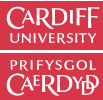
Jeannette M. Wing, a Chinese-American computer scientist and former professor at Carnegie Mellon University, focuses on formal methods, trusted computing, distributed systems, and programming languages. In 1993, he collaborated with Turing Award-winning Barbara Liskov on the famous Liskov Substitution Principle, one of the fundamental principles of object-oriented computing. In march 2006, she gave a definition of computational thinking in the journal 《Communications of the ACM》 . According to her, "Computational Thinking is a series of thinking activities that encompass the breadth of computer science by applying the concepts underlying computer science to problem-solving, system design and human comfort understanding"(Wing, 2006).
Jeannette M. Wing was an instrumental contributor to computer thinking. She was also the scientist who first introduced the concept of computational thinking. Over the years, she has continued to refine the concept of computational thinking and has encouraged everyone to learn about it(Wing, 2008). In her lectures, she talks about how computational thinking is a fundamental skill for everyone in the middle of the 21st-century world. At the Microsoft Asia Pacific Education Summit 2012, she shared further insight into computational thinking, stating that "computer thinking is the ability to describe a problem in a clear, abstract way and to represent the solution to a problem as an information processing process". Digging deeper into the nature of computer thinking reveals that the essence of computational thinking is abstraction and automation(Wing, 2008). Any material can be mapped as a transformation of discrete symbols, and discrete symbols can be modelled, and algorithms developed to control the evolution of the symbols and automate them. In this way, information can be designed, implemented and evaluated for human interaction with the environment. Computer thinking has a broad scope and is not only valid for the development of computer science and technology but also for the development of other fields and modes of thinking. She promotes the active learning of computational thinking among students, spreading the joyful and noble feelings of computer science and working to make computer thinking common sense(Wing, 2008).
Lu, J.J. and Fletcher, G.H.L. 2009. Thinking about computational thinking. Proceedings of the 40th ACM technical symposium on Computer science education - SIGCSE '09.
Selby and Woollard (1970) Computational thinking: The developing definition, ePrints Soton. University of Southampton (E-prints). Available at: https://eprints.soton.ac.uk/356481/ (Accessed: November 2, 2022).
Wing, J.M. (2006) “Computational thinking,” Communications of the ACM, 49(3), pp. 33–35. Available at: https://doi.org/10.1145/1118178.1118215.
Wing, J.M. 2008. Computational thinking and thinking about computing. Philosophical Transactions of the Royal Society A: Mathematical, Physical and Engineering Sciences 366(1881), pp. 3717–3725.